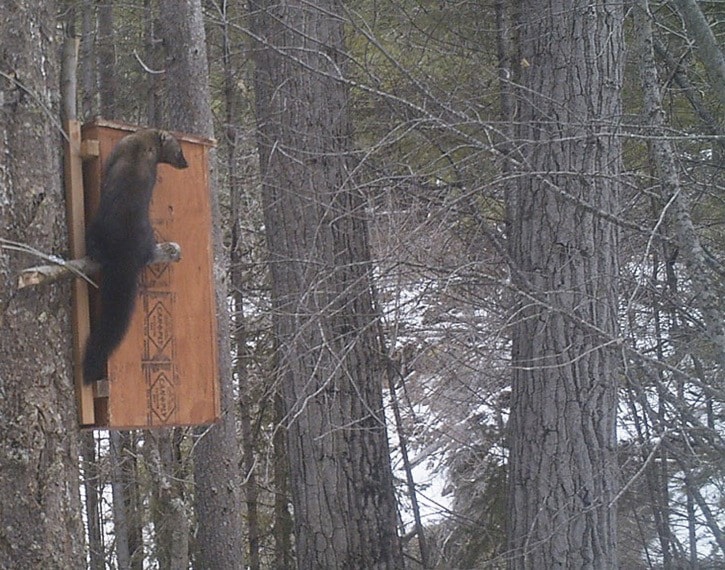Larry Davis is hoping to help fishers in B.C.’s Interior give birth and raise their young in forests where there are not many natural den trees.
A year-and-a-half ago, the Williams Lake wildlife biologist began installing wooden den boxes on trees approximately three metres above the ground.
“We started off in the Bridge Lake watershed west of Lilooet with 25 boxes. Now I’ve installed 29 in the Cariboo-Chilcotin,” Davis told the Tribune.
During the summer he left cameras up near some of the boxes and said after a year the boxes were being used.
“I think it takes them a long time to find them and get comfortable,” Davis said of the fishers. “Maybe our scents are still on the boxes.”
None of the boxes have been torn down, despite the smelly lure placed outside each one that can attract anything from bears to wolverines, he added.
Fishers give birth to two or three kits at a time, but do not breed every year.
The survival rate of the kits is only at about 50 per cent in the first year and the adults only live to about eight years of age.
“This is part of the reason they are thought of as a threatened species,” Davis said. “They took them off the red (endangered) list in 2005, and put them back on the blue list which is a threatened status, but with all the harvesting that’s going on they are teetering back towards the red list again.”
In 2004 when they were endangered, Davis led a project where 24 fishers were trapped and collared.
“I tracked them from 2006 to 2009 and found out where they had their young.”
Before his project, researchers had only found fishers in Cottonwood trees in B.C.
Davis, however, didn’t find the fishers denning in any Cottonwood, instead they were using Pine, Douglas-Fir and Aspen.
To attract the fishers, trees have to keep a cavity while the outside structure is still intact, Davis said. They will often find cavities made by woodpeckers or even from a branch falling off.
The moms only go for cavities with access holes eight to 12 centimetres in diametre — large enough to squeeze into, yet small enough to keep predators away.
Davis first began studying fishers in 2002 with the Ulkatcho First Nation because there was concern from trappers that logging was impacting fisher habitat.
The den box project is being funded by BC Hydro’s Fish and Wildlife Compensation Program and the Habitat Conservation Trust Foundation. Lumber for the boxes was donated by West Fraser and some labour to make them was donated by Tolko.
“It was great to have some local help and interest in the project,” Davis said.
“Now we just have to find homes for the last two boxes.”
Davis will also be giving a presentation on the project at Scout Island Nature Centre on Wednesday, Feb. 25 at 7 p.m. Admission is free.
On a Facebook page titled Phat Weasels, Davis has posted some great photographs from the project.
